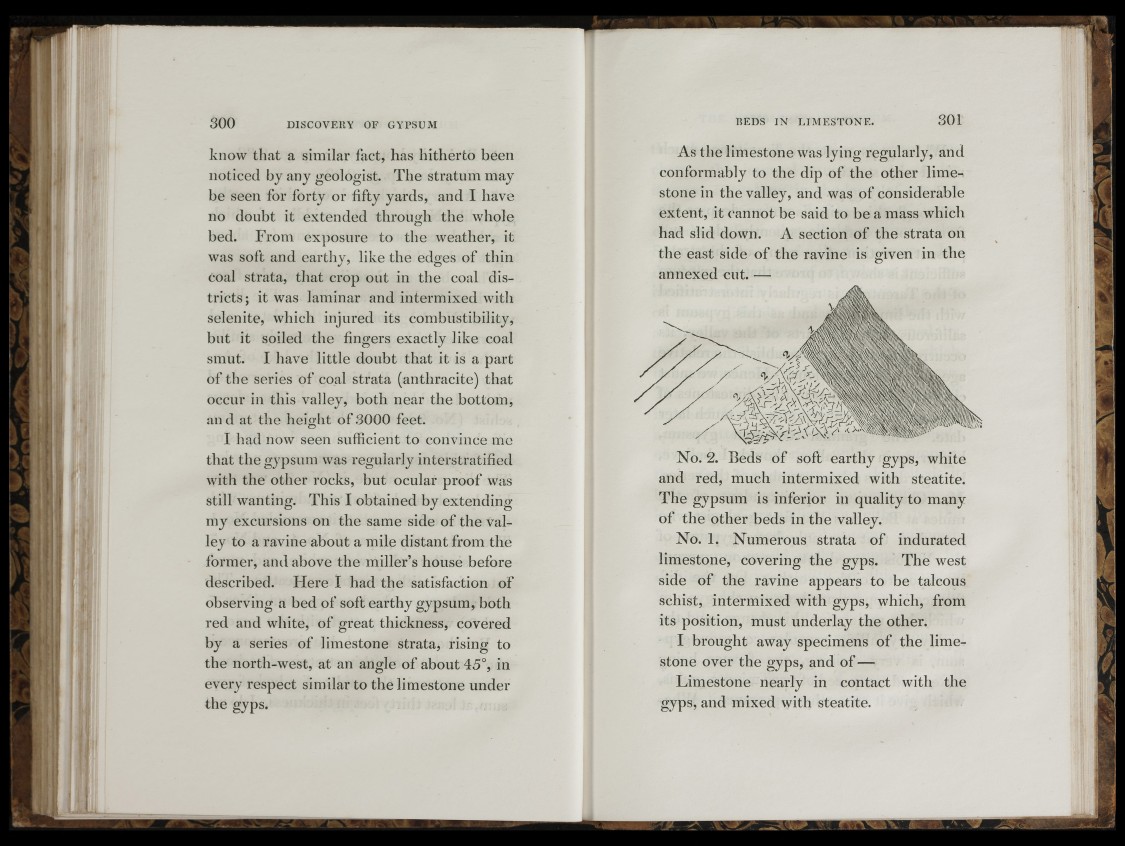
300 D ISCOVE l lY OF G Y P S UM
I I I
know that a similar fact, has hitherto been
noticed by any geologist. The stratum may
be seen for forty or fifty yards, and I have
no doubt it extended through the whole
bed. From exjiosure to the weather, it
was soft and earthy, like the edges of thin
coal strata, that crop out in the coal districts;
it was laminar and intermixed with
selenite, which injured its combustibility,
but it soiled the fingers exactly like coal
smut. I have little doubt that it is a part
of the series of coal strata (anthracite) that
occur in this valley, both near the bottom,
and at the height o f 3000 feet.
I had now seen sufficient to convince me
that the gypsum was regularly interstratified
with the other rocks, but ocular proof was
still wanting. This I obtained by extending
my excursions on the same side of the valley
to a ravine about a mile distant from the
former, and above the miller’s house before
described. Here I had the satisfaction of
observing a bed of soft earthy gypsum, both
red and white, of great thickness, covered
by a series of limestone strata, rising to
the north-west, at an angle of about 45°, in
every respect similar to the limestone under
the gyps.
mmcri ■
BEDS IN L IM E S T O N E . 301
As the limestone was lying regularly, and
conformably to the dip of the other limestone
in the valley, and was of considerable
extent, it cannot be said to be a mass which
had slid down. A section of the strata on
the east side of the ravine is Ooiven in the
annexed cut. —
No. 2. Beds of soft earthy gyps, white
and red, much intermixed with steatite.
The gypsum is inferior in quality to many
of the other beds in the valley.
No. 1. Numerous strata of indurated
limestone, covering the gyps. The west
side of the ravine appears to be talcous
schist, intermixed with gyps, which, from
its position, must underlay the other.
I brought away specimens of the limestone
over the gyps, and o f—
Limestone nearly in contact with the
gyps, and mixed with steatite.